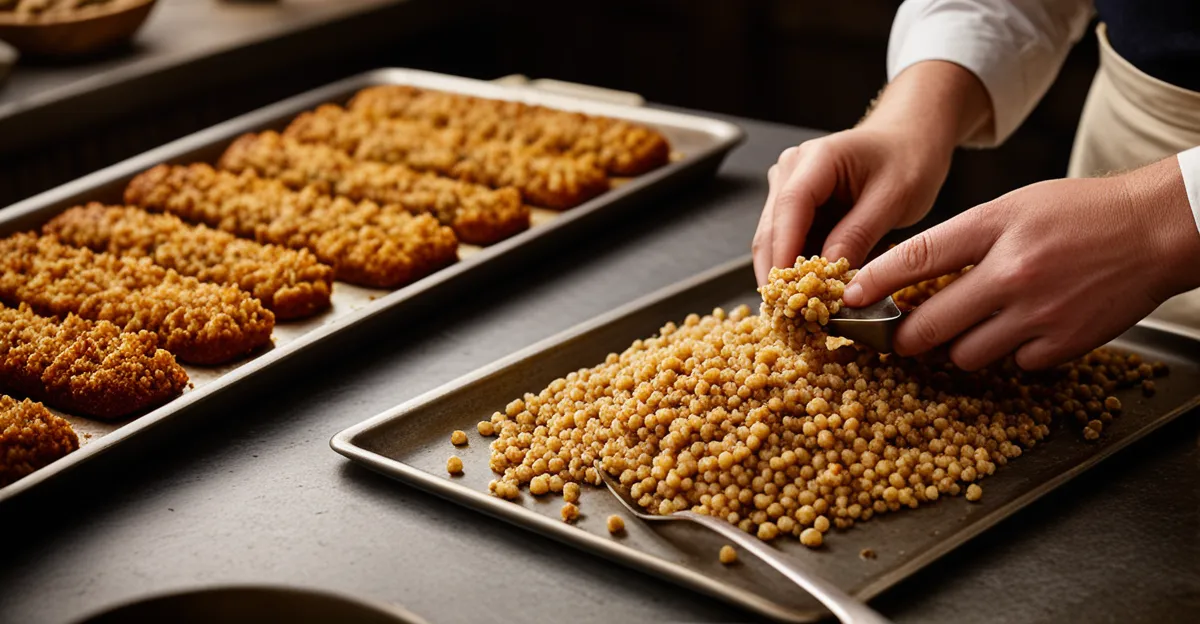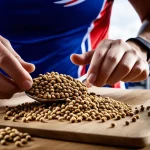Understanding Traditional British Cuisine
Traditional British cuisine is a delightfully complex tapestry woven from a rich history and varied regional influences. Culinary heritage plays an essential role in shaping the identity of British food, combining native and international inspirations to form a unique menu of flavors. At the heart of these recipes, you will find key components such as meat pies, seafood, puddings, and a variety of hearty stews, all characterizing the hearty and comforting nature of British food.
Historical influences have profoundly impacted the evolution of British recipes, especially given the nation’s extensive global interactions. The British Empire’s expansion brought spices, herbs, and cooking practices from different parts of the world, which have been blended into country-specific dishes. Take, for instance, the cherished Sunday roast—a culmination of time-honored roasting techniques and familial traditions passed down over generations.
Also read : How do you prepare a traditional English trifle dessert?
Moreover, regional dishes highlight Britain’s geographical diversity, each with their own notable specialties. In Scotland, dishes like the comforting haggis are a point of pride, whereas Wales serves up cawl—a traditional lamb soup—as a staple on cool evenings. England itself boasts its famed fish and chips and the classic full English breakfast, marking significant spots in the nation’s culinary map.
The significance of regional variations cannot be overstated, as they preserve the cultural identity of local communities and showcase the adaptability of British cuisine over time. These traditional recipes not only offer a taste of history but also put on display the immense variety and depth found within British culinary traditions.
Have you seen this : What Are the Health Benefits of Eating Traditional UK Dishes?
Essential Techniques for British Cooking
Mastering cooking techniques is paramount to achieving authentic British dishes. Fundamental methods such as baking, roasting, and simmering are the backbone of traditional recipes. Each technique requires precision and consistent practice to faithfully replicate the flavors and textures that define classics like the roast beef or Yorkshire pudding.
Technique consistency plays a crucial role in preserving the traditional character of these recipes. For instance, the even roasting of meats ensures the right balance of savory crust and tender interior, a hallmark of British culinary excellence. Similarly, the art of baking a pie with perfectly laminated pastry requires attention to dough consistency and baking temperature.
To refine your culinary skills, focus on mastering the basics. Hone your knife skills for more efficient ingredient preparation, and practice controlling oven temperatures for more predictable results. Additionally, pay attention to the timing of each step, as British recipes often rely on precision to coax out targeted flavors.
By focusing on these culinary skills, cooks can develop a deep understanding of each dish’s unique requirements. Embrace these techniques and immerse yourself in the time-honored traditions of British cuisine, ensuring a delicious and authentic culinary experience.
Sourcing Quality Ingredients
The essence of British cooking lies in the fresh produce that constitutes the heart of its traditional dishes. Careful consideration in ingredient sourcing ensures authenticity and elevates the overall culinary experience. When seeking out authentic British ingredients, it helps to become familiar with local specialties and seasonal offerings.
Opting for locally sourced produce, such as meats, vegetables, and cheeses, not only supports local economies but also guarantees freshness and quality. Frequenting local markets is a great way to discover seasonal produce, often more flavorful than items transported over long distances. Visit farmers’ markets for vibrant, fresh fruits and vegetables that add depth to dishes like stews and pies.
Identifying specialty shops in various regions can provide insights into unique ingredients intrinsic to regional dishes. Whether it’s smoked haddock from the Scottish highlands or Welsh sea salt, these components are essential to understanding and replicating traditional British recipes. By selecting the finest local and seasonal ingredients, you maintain the culinary heritage and ensure an authentic taste.
Key Recipes to Master
Exploring traditional British dishes is a delightful journey through time-honored culinary artistry. Here, we spotlight some classic recipes that encapsulate the charm of British cuisine. Each offers an opportunity to engage deeply with the region’s rich culinary heritage.
Recipe for Fish and Chips
Fish and chips serve as a quintessential British meal, celebrated for its simplicity and delightful flavors. This classic involves battering fish fillets, often cod or haddock, and frying them until golden and crispy. Accompanied by thickly cut chips, this dish has thrived since the 19th century. Ensure you use quality fresh produce for the fish to achieve authentic taste and texture.
Recipe for Shepherd’s Pie
A comforting traditional recipe, Shepherd’s Pie is beautifully rustic. It features minced lamb in a savory gravy topped with a layer of creamy mashed potatoes. Subtle regional variations may include different vegetables or seasonings, reflecting local influences. This hearty dish showcases the practical use of wholesome ingredients, ensuring depth in flavor while maintaining simplicity.
Recipe for Victoria Sponge Cake
The Victoria Sponge Cake epitomizes British baking elegance. To achieve its light, airy texture, precise ingredient measurements and timing in baking are crucial. Fillings typically include jam and whipped cream or buttercream, embracing both tradition and taste. Perfect for an afternoon tea, this cake invites both novices and seasoned bakers to delve into its delightful nuances.
Among these culinary classics, mastering each dish offers a chance not only to indulge in rich flavors but also to connect with the storied past of British gastronomy.
Common Challenges and Solutions
In any culinary tradition, even seasoned cooks encounter cooking challenges. Preparing traditional British dishes is no exception and can present unique obstacles. Whether it’s achieving the right texture in a pudding or the ideal crispiness in a roasted joint, these preparations can be tricky. Here, we delve into typical difficulties and provide expert guidance to help overcome them.
Typical Challenges
One frequent issue is obtaining consistent results, particularly in methods like baking and roasting, which are staple cooking techniques in British cuisine. Achieving the perfect balance of flavours and textures can be demanding, especially when precision isn’t met. Another concern is sourcing authentic ingredients, which affects not only taste but also the dish’s originality.
Expert Solutions
To ensure consistency, pay close attention to technique consistency. This means maintaining precise oven temperatures and timing your cooking processes carefully. When it comes to overcoming ingredient unavailability, consider adaptable recipe execution. For example, if authentic Yorkshire pudding ingredients are hard to find, locally sourced alternatives can often yield satisfactory results without compromising too much on integrity.
Encouraging Adaptability
Adapting to available resources is crucial when tackling traditional recipes. Remember, many traditional British recipes have been adapted over generations, reflecting the cook’s environment and available produce. This adaptability is a skill worth honing, ensuring your dishes stay true to their roots while still embracing personal creativity.
Personal Anecdotes and Historical Context
Drawing from personal experiences can breathe life into the preparation of traditional British recipes. While my attempt at crafting a Victoria Sponge Cake resembled a comedic episode, the support of centuries-old culinary foundations, along with a dose of trial and error, guided me to eventual success. This journey of self-discovery through historical recipes allows home chefs to bond with the past in tangible, delicious ways.
A deep dive into the culinary heritage reveals enriching historical anecdotes. The Sunday roast, for example, originally evolved from a need to make the most of available resources before modern economies and logistics allowed mass distribution. Its enduring popularity speaks volumes about its importance in sustaining cultural ties and enhancing familial bonds. Cooking this meal has often led me to reflect on how its role has transcended mere sustenance.
Moreover, the dish haggis provides insight into the ingenuity of Scottish cooks. Invented out of necessity, haggis was originally a way to ensure nothing went to waste, marrying practicality with flavourful outcomes. Such regional dishes showcase the adaptability and resourcefulness of British culinary styles, embodying both historical evolution and cultural significance.
Ultimately, whether experimenting or following meticulously detailed instructions, connecting with personal and cultural stories through cooking steeps the experience in a rich tapestry of history and flavour. It instills a profound appreciation for the staples of British cuisine while nurturing an inclusive culinary dialogue.
Visual Aids for Better Understanding
Visual aids such as cooking visuals and instructional videos play a pivotal role in enhancing the mastery of traditional British recipes. They bring clarity to complex techniques, ensuring that each step is easily grasped, from preparing the perfect batter in fish and chips to achieving a flawless crust in pies.
Recipe images provide an essential reference point, helping cooks visualize the desired outcome. When tackling the art of British baking, for instance, images can guide you in recognizing the ideal consistency of dough or the correct degree of doneness in a Yorkshire pudding. By matching visual cues with your own creations, you maintain the integrity and authenticity of the dish.
Utilizing instructional videos, especially from reputable chefs and culinary experts, can further demystify the process. Videos offer real-time guidance, showcasing nuanced steps such as folding techniques in Victoria Sponge Cake or the optimal way to layer mashed potatoes over minced lamb in Shepherd’s Pie. They often include tips and tricks that are not easily captured in written form, enhancing your culinary skills through engaging and interactive learning.
When seeking out resources, prioritize those with clear, step-by-step visuals and comprehensive explanations. Websites with quality recipe images or platforms hosting detailed instructional videos can significantly bolster your confidence and ability to execute traditional British recipes flawlessly. Remember, integrating these visual aids into your cooking routine not only improves understanding but also enriches your overall culinary experience.
Variations and Modern Adaptations
In the ever-evolving world of gastronomy, traditional British recipes have gracefully transitioned into the modern culinary scene, embracing recipe adaptations that infuse contemporary tastes while preserving their historical essence. Understanding how these dishes have adapted helps appreciate the blend of tradition with innovation.
Recipe adaptations allow chefs to explore ingredients not historically available in Britain or experiment with global techniques, pushing boundaries without losing core elements. Consider the classic Shepherd’s Pie; while traditionally composed of minced lamb and mashed potatoes, modern versions may incorporate ingredients like sweet potatoes or vegetarian fillings, catering to diverse dietary preferences.
Contemporary twists on British classics have also led to inventive recreations of dishes like the humble fish and chips, where chefs might opt for different fish types or even a batter infused with spices, reflecting the global palette. Such adjustments illustrate how culinary creativity thrives, showcasing the adaptability of British cuisine.
Encouraging culinary creativity, cooks are invited to experiment, balancing historical authenticity with personal flair. Whether tweaking herbs and spices or substituting a key component, the spirit of innovation keeps traditional British recipes vibrant and relevant, ensuring they continue to captivate palates across generations. Embrace these opportunities to inject unique touches, making each dish not only a nod to its origins but a celebration of ongoing evolution.






